Singha Park (Chiang Rai) – 7 Best Things To Do For Travelers 2026
Singha Park in Chiang Rai is a destination that awakens a sense of awe from the moment you cross its threshold. A towering golden lion, the symbol of Singha, stands as a grand and unmissable welcome figure at the park’s entrance, offering a hint of the majesty that lies within this verdant expanse. Despite being renowned as a sprawling tea plantation, a visit to Singha Park reveals much more than tea leaves. Even if tea might not be your primary interest, rest assured that this unique destination has a vibrant medley of activities that cater to every member of the family, promising hours of quality enjoyment and engagement.
Singha Park is an easy ride from Chiang Rai city and offers gardens, cycling lanes, and family attractions. Internal park roads are simple, but riders should watch for bicycles and slow carts moving across intersections. Parking areas lack shade, so bring something to cover your seat in the sun. For flexible travel between the city and the park, many visitors rely on our scooter rental service for light and efficient movement.
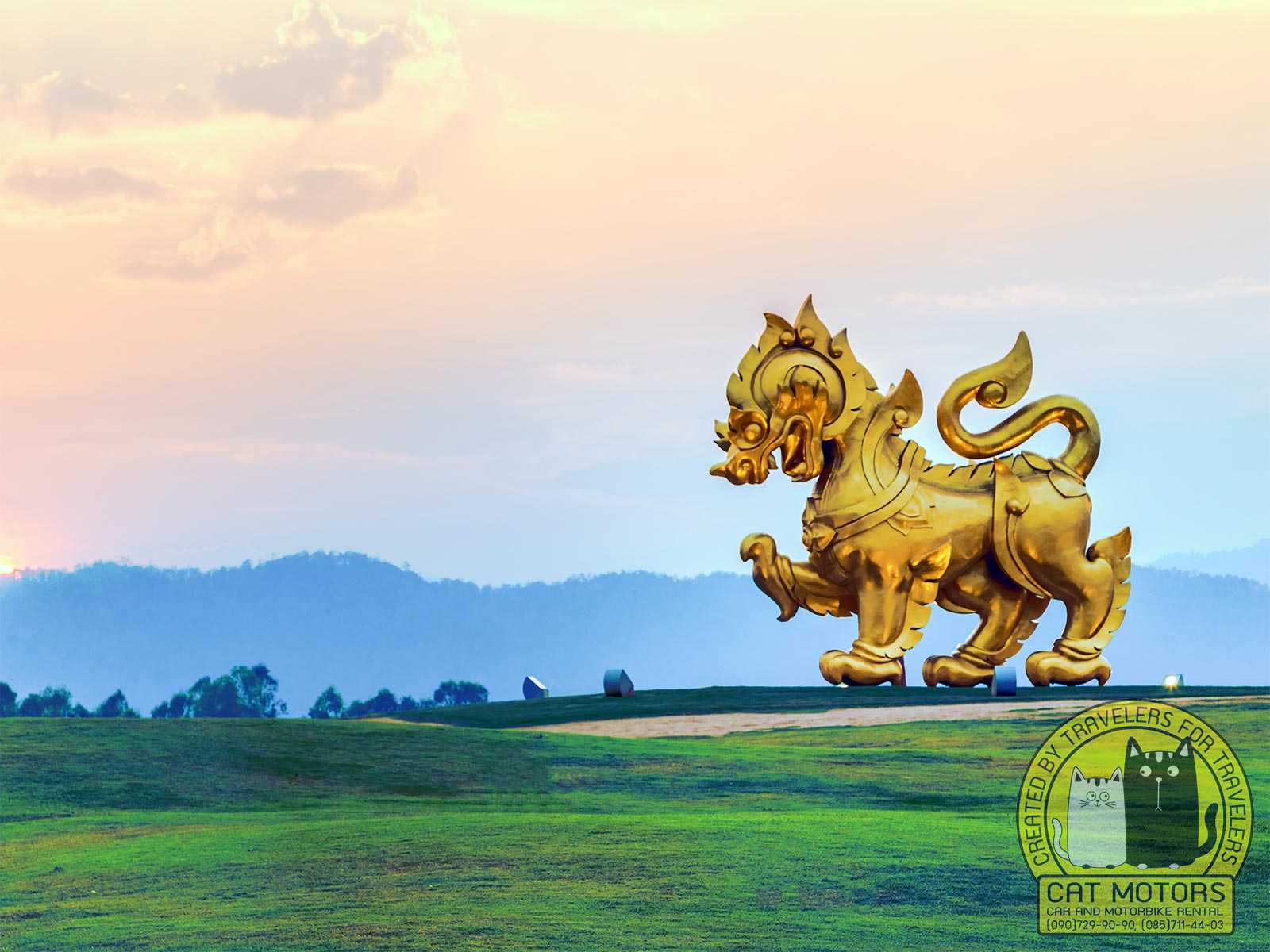
This plantation carries a historical significance tied to the production of Singha Beer. Owned by the same proprietors, it used to be known as the Boon Rawd Farm, where they cultivated barley plants for beer production. But a remarkable transformation has since taken place within these farmlands. What precipitated such a dramatic change at the farm? Our comprehensive travel guide delves into the rich history and evolution of Singha Park, covering every corner of this extraordinary property, and detailing an array of activities waiting to be explored. We are excited to accompany you on this journey of discovery.
Singha Park In A Nutshell
Singha Park (pronounced “sing”) lies 12 km (7.5 miles) southwest of Chiang Rai city center, nestled in the picturesque Mae Kon countryside. On 12.8 km² (3163 acres/8000 rais) of fertile ground, the park includes an enormous tea plantation, other fruit and vegetable crops, a mini petting zoo, a lake, and enough high-energy activities to satisfy the adrenaline junkies, warranting at least a half-day visit.
A Brief History: From Beer To Tea
Boon Rawd Farm originally grew barley to produce Singha beer for the family-owned brewery. The brewery first opened in 1933, founded by Boonrawd Shreshthaputra. King Prajadhipok awarded him the title of Phraya Bhirom Bhakdi, and today his descendants, who own and run Singha Park, continue using it as their family name.
In 2012, Boon Rawd decided to convert the farm into an agritourism project, opening its gates to the public in December of that year. A significant section of the grounds is still a fully operational farm growing tea, fruit, and barley. Most of the barley is used for health products and malted drinks these days, not beer. Nowadays, the farm is more well-known for its oolong tea.
As an agritourism project, the park offers visitors the opportunity to learn about tea cultivation and production. However, it also lures a much wider crowd with its various dining options, sports activities, festivals, or even the option to enjoy the fresh country air amid the meadows, lakes, and trails.
The farm works with colleges and schools, and students make up a good portion of the visitors during the week. At the weekend, the park draws its visitors from Thai families, cyclists, and those seeking to escape the city.
Getting Around The Park
While some visitors may only be heading to the restaurant or one of the activities, it is worth taking a few hours to see the entire park.
At each stop, there is a shaded area where visitors can sit and view the sights. As you tour Singha Park, the first stop will be Swan Lake. There is a small kiosk where you can enjoy an excellent cup of coffee while watching the graceful swans on the lake. For 20 baht, you can also feed the fish that bob up and down near the water’s surface, clearly used to the idea of humans feeding them.
The next stop is Flower Bloom. One of the favorite photo opportunities on the farm is when the flowers are in bloom. The bright yellow Cochlospermum, multi-colored cosmos blossoms, and exquisite lavender fields provide magnificent backdrops for your holiday pictures.
The farm produces massive crops of oolong tea, so it’s appropriate that one of the stops is a tea kiosk. Under this little shaded canopy, you can enjoy a delightful cuppa that you’ve blended yourself. The final two stops are the mini-zoo and the Sports and Recreation Center.
Hop On The Tram For A Tour Of The Park
The park has electric trams that take visitors on tours around the farm. They depart from the front entrance every half-hour. As it is a popular way to see the park, you might not be able to take the tour immediately. You will then have to book a seat on a later trip and keep busy with other activities until your ride is available.
The tram takes visitors through the tea plantations and the flower fields, allowing them to take pictures from the tea plantation viewpoint and the animal viewing point.
Pricing: Adults pay 100 baht and children 50 baht
Trams run half-hourly from 10 am – 5 pm
Get Your Cycling Gear On
Another way to see this extensive farm is by cycling along the paths and roads. Singha Park is a popular area for cyclists wanting to get some exercise on weekends. Many have their own bicycles and gear, but visitors can rent different types of bikes on the premises. Helmets are included in the rental price.
There are several bike routes that cyclists can choose from, and the map provided at the rental hut will indicate the length and level of difficulty of each course. Cyclists must sign in at the bike desk before starting their trips through the park. You will find the bike rental section at the Sports and Recreational Center.
Bike rent is charged per 90 minutes, and two hours will be sufficient to cycle around the plantation and stop to take some snapshots of the scenery. Visitors to the park can choose to rent tandems, mountain bikes, or kiddies’ bikes.
Pricing: 200 baht per 90 minutes
Hire An Electric Scooter
Another way to experience the park’s beauty is by taking a self-guided tour with an electric scooter. You can cruise along the pathways without breaking a sweat, stopping at picturesque sites to take photos.
Pricing: 300 baht per 90 minutes
Rent A Golf Cart
If you don’t want to rely on a tram trip’s time frame, you can hire a golf cart and see Singha Park at your own pace. Golf carts cost around 700 baht for 150 minutes.
Singha Park Things To Do
Farm Tour
Starting with a chilling activity by enjoying a farm tour of Singha Park. The trams are available periodically, with the first one servicing at 09:00 and the last one at 16:00. Each tram will depart every 30 minutes with a fare of 150 Baht for adult and 50 Baht for children not taller than 110 centimeters. You can enjoy each stop indefinitely as there is a continuous tram service to each point of interest.
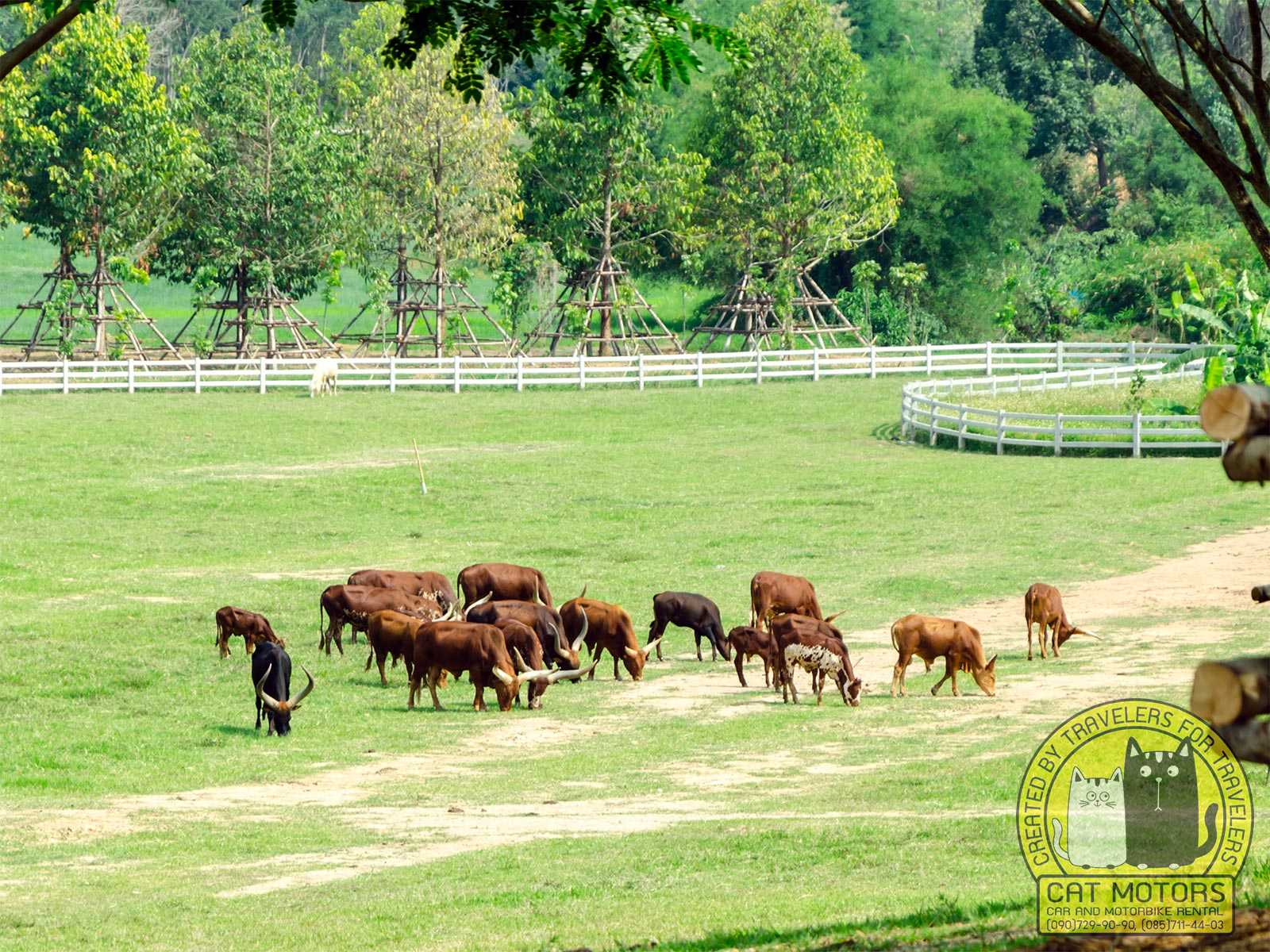
You’ll visit the various parts of the park, from plantation fields growing fruits and vegetables such as oranges, jujubes, strawberries, raspberries, rubbers, oolong tea plants, and many more. The tram also passes swan lake, with over 50 swans swimming about in the area. Breathe in the pure, refreshing air, especially in winter, when you can also witness bright, colorful flower fields ranging from pink cosmos flowers to yellow sunn hemp flowers, among various other species.
Taking gorgeous photos at Singha Park's tea plantation
Whether you’re an amateur or professional photographer, or even just a visitor taking snaps of your Thai holiday, the park offers some stunning backdrops for your photos. It’s almost mandatory to stop at the giant golden lion for a selfie. After all, who can resist posing next to this enormous mythical creature?
The verdant tea plantations, with their endless rows of beautiful bushes, create an exquisite background for photos, especially if you hire the available props of traditional hill tribe outfits and tea baskets.
You can also capture your memories with snaps of swans gliding gracefully on the lake and the vibrant colors of the flowers in the meadows. Or, if you’re not into photos, simply being outside in this exquisite environment is soothing to the soul. Few people can say they’re not in need of stress relief, and this is the perfect place to refresh.
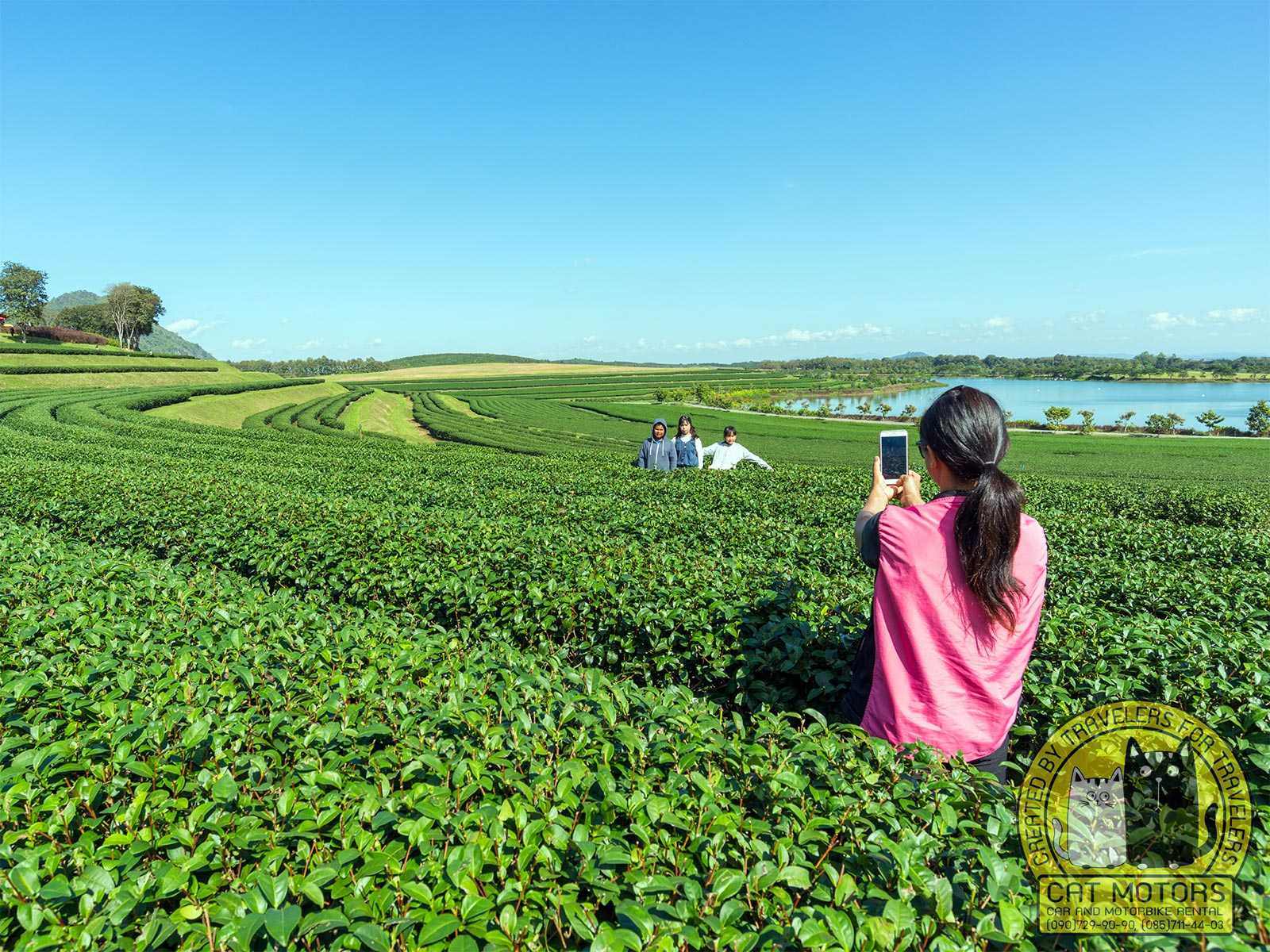
Make the first stop at the park’s tea plantation, which grows Jin Xuan tea – more commonly known as Oolong Tea No.12. It is a type of tea that originated in Taiwan and grew in beautiful rows on the plantation across a wide area, with over 700 thousand trees and spanned over 600 rai (0.96 square kilometers). You can also rent traditional hill tribe costumes with tea baskets as props to take photos of the lovely tea plantations.
Petting Zoo and giraffe feeding
Most children love animals, and the petting zoo at the farm can keep them entertained for ages. Instead of the usual sheep and donkeys found at typical petting zoos, kids can enjoy getting to know some giraffes and zebras, Sun Conure parakeets, and Watusi cattle.
Kids can feed the giraffes and zebras their favorite treats, which they can buy on-site. Who knew that they love bananas? Young visitors can buy a bunch of bananas or carrots for 20 baht to feed their furry friends. Little ones can also have fun dressing up as cowboys or cowgirls and taking pony rides around the area.
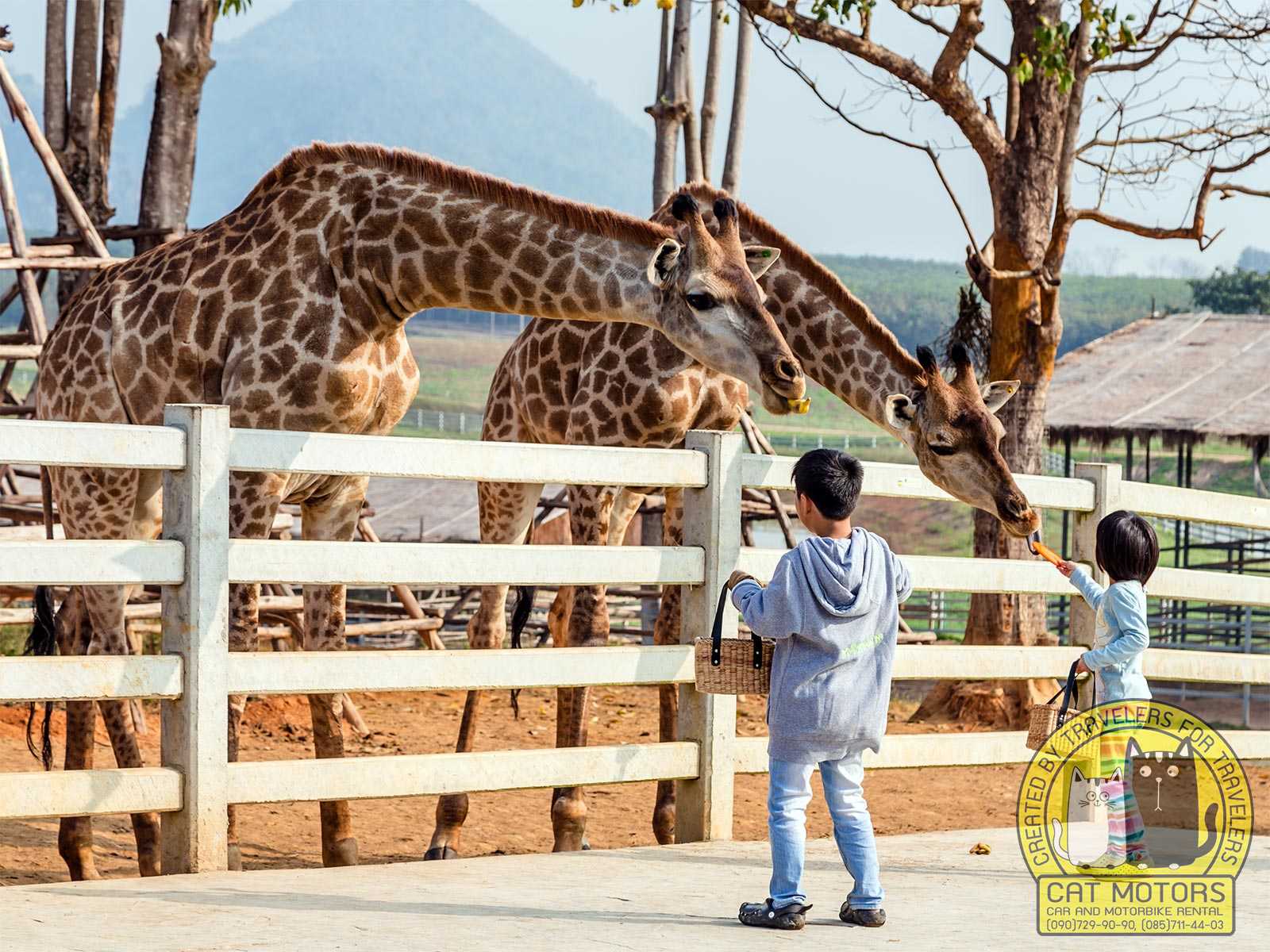
Younger tots who may be afraid of the bigger animals will enjoy the little rabbits, guinea pigs, goats, and birds. The vibrant colors of the pheasants, peacocks, and parakeets are a sight to behold. And anyone, old or young, could not resist the cuteness of the little piglets. Bottle-feeding them is the highlight of many visitors’ day.
Admiring the view of Doi Chang and zip-lining
The last stop is the Sports, Recreation, and Adventure Center, where you can enjoy slinging from zip lines. The activity is available in rounds from 10:00 – 18:00, costing 300 Baht per round. This is where you can enjoy a 360-degree view of Doi Chang at a height equal to an 9-stories building for over 400 meters. Quite a bit of adventure to experience!
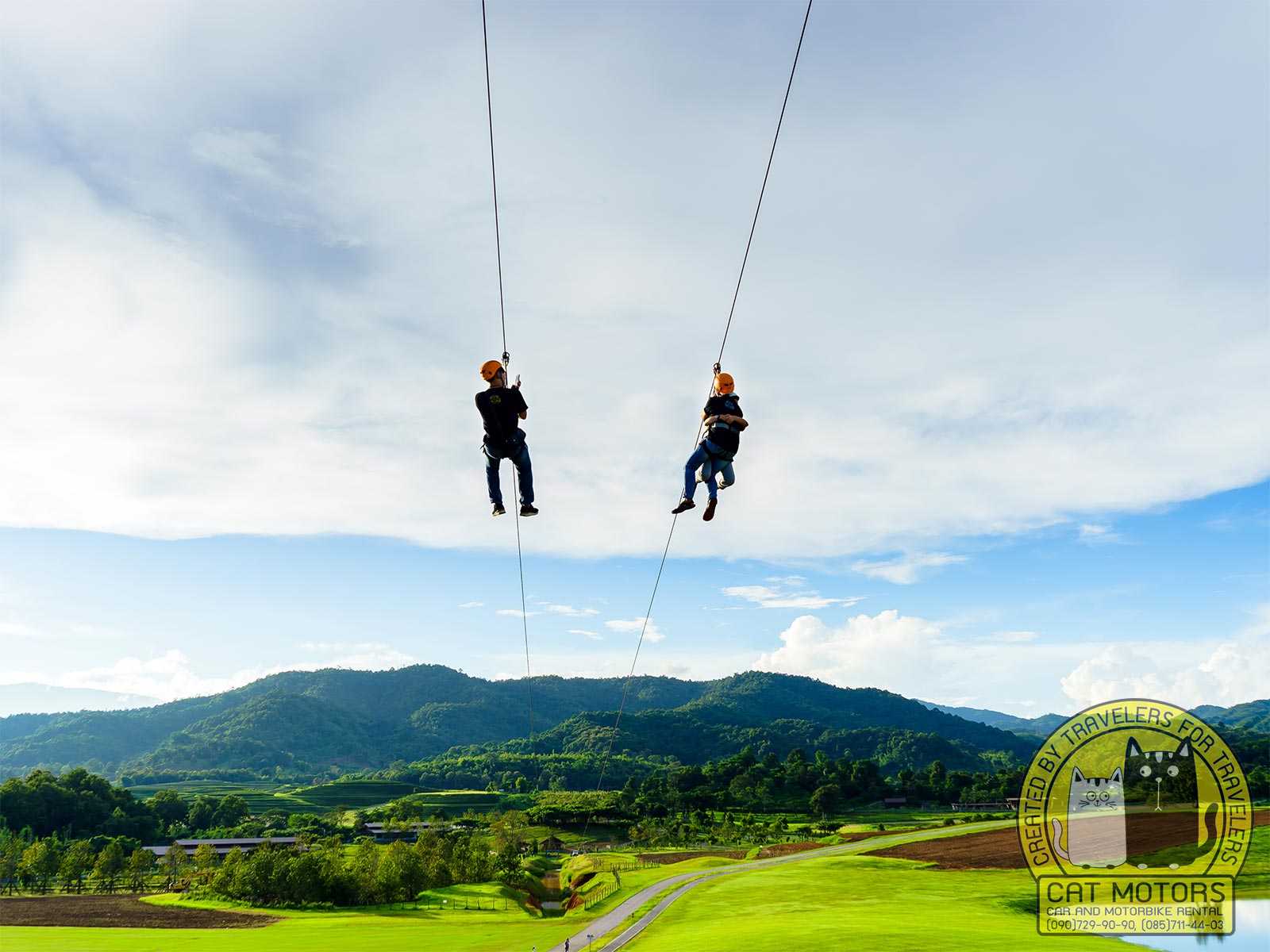
After gearing up and wearing helmets properly, the guide will take you to a 9-stories high zip-line tower, tall enough to make your heart races a bit. As soon as you get into positions at the launch points and the guide starts counting from 1 to 3, be ready to hear loud screams of excitement afterward. Those who love challenges can’t miss this place.
In addition to zip lines, you can also find a wall climbing activity here and a rental bike service that allows you to ride around the park along bike routes ranging from 2-10 kilometers long. This activity will enable you to exercise alongside sightseeing the beauty of nature up close.
After you’re done with the exciting zip-lining, the trams will take you back to the terminal at the entrance.
Price: 300THB per round
Scaling New Heights On The Climbing Wall
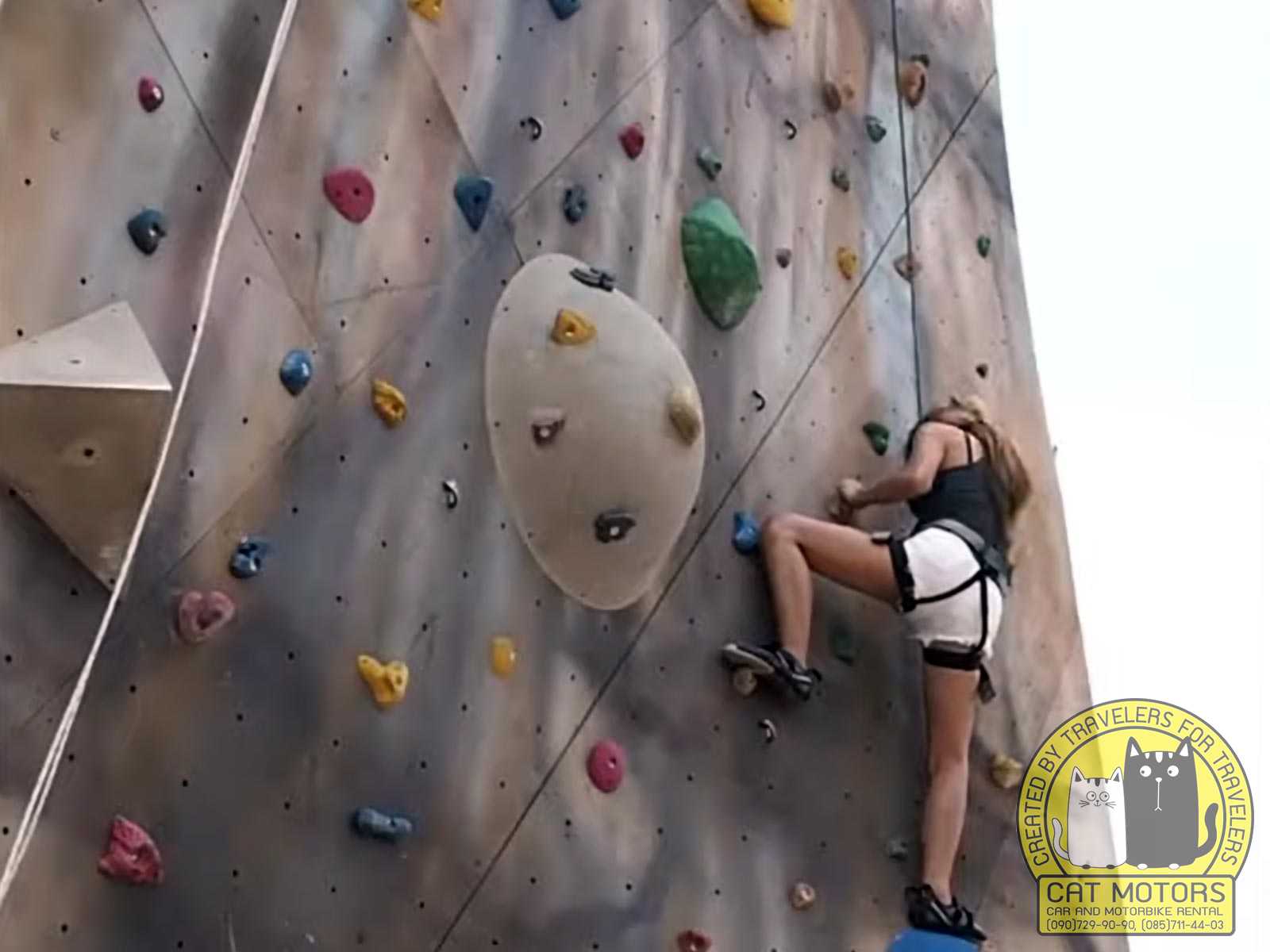
Visitors eager for a physical challenge should head to the climbing wall. The park offers a 15 m (49.2 foot) artificial wall constructed to build physical strength. The wall mimics the obstacles and outcrops found on natural cliff faces, and climbers use the typical rock-climbing gear to attempt their ascent. Visitors have two options when scaling the climbing wall; top-roping or lead climbing.
Price: 150THB per round
Top rope climbing, or “top roping” for short, is a super fun type of climbing where the climber is securely fastened to a rope. This rope runs up to an anchor system at the top and then back down to a belayer who’s at the bottom. While climbing, the belayer is there to take in any slack rope. So if the climber happens to lose their grip, they won’t fall very far at all.
As for lead climbing, it’s when one climber takes the lead and the rest follow along. The lead climber wears a harness connected to a rope that links them to the other climbers. While making their way up, the lead climber will connect the rope to safety gear periodically to ensure everyone’s safety in case of a fall. This protection can include permanent bolts that the climber clips quickdraws to or even removable gear like nuts and cams.
Cycling

You will especially enjoy cycling along the paved roads and numerous nature park trails among the beautiful flower fields and picturesque scenery.
Price: 200THB per hour and half
Singha Park Camping
If you didn’t get enough of the park yet and wish to stay at the park longer, Singha Park also opened the camping to service campers as well, with camping grounds available for those who brought their own tents and prefab camping tent accommodations available for rent for those who did not.
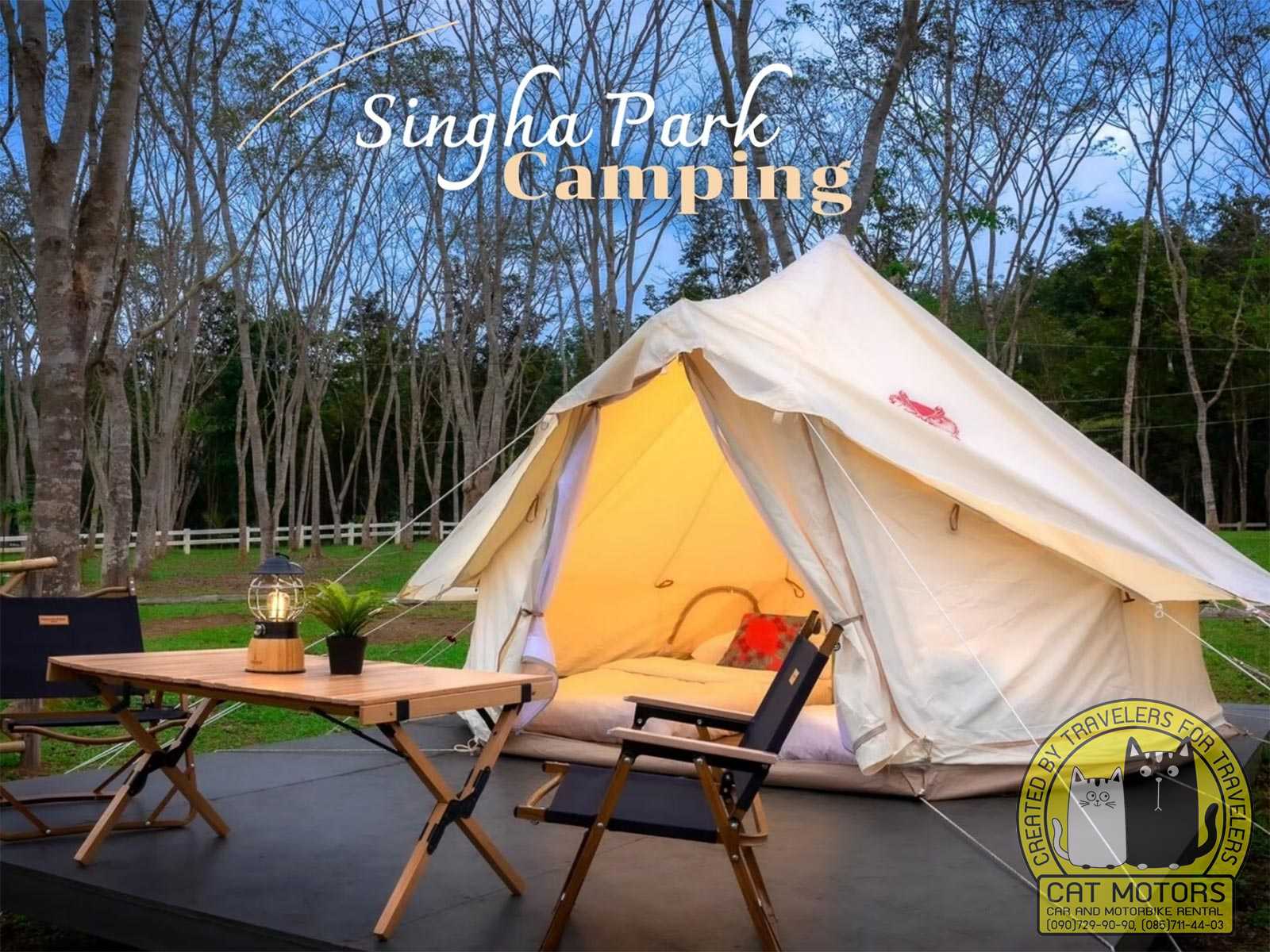
There are many interesting events as well, especially during winters when you can experience gorgeous flower fields that you can take photos to post on social media. Anyone who plans a trip to Chiang Rai cannot miss visiting Singha Park Chiang Rai as well!
Hot Air Balloon Festivals
The park is a perfect venue for events and festivals, and it often hosts music concerts with top Thai bands which draw large crowds. The park holds many sporting and cultural events, including cycling races and the annual Hot Air Balloon Festival.
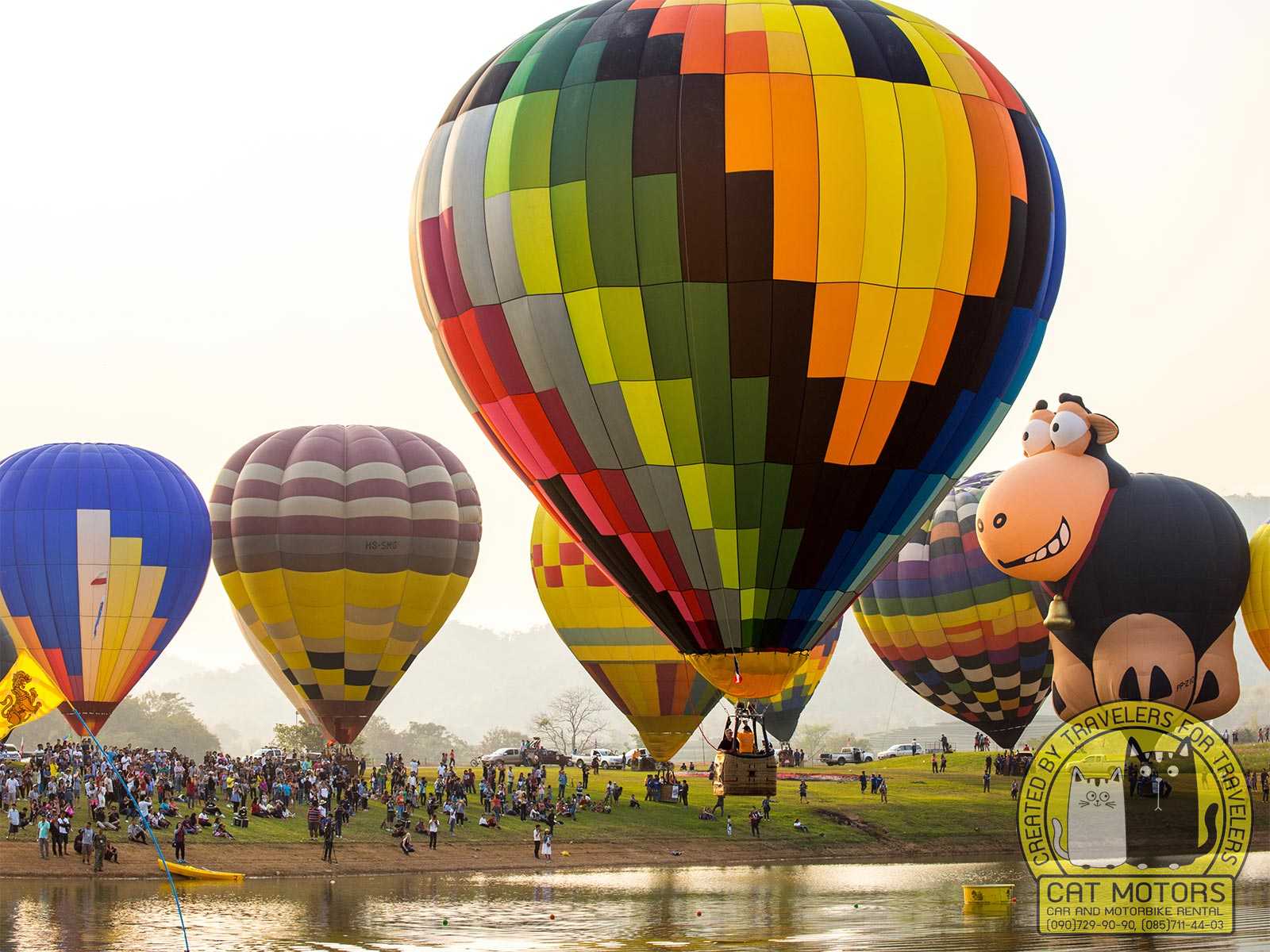
The Singha Park International Balloon Fiesta happens every February, with participants from 14 countries. Brightly colored hot air balloons fill the skies for four days. The festival includes daily competitions and an evening event called Balloon Magic Night Glow. You can find out about upcoming events on Singha Park’s official FB page.
Bhu Bhirom Restaurant
Singha Park boasts numerous restaurants and cafes on its premises. The popular Bhu Bhirom Restaurant sits in an elevated position, providing gorgeous farm views. It offers traditional northern Thai cuisine, Asian fare, and Western food, so there’s something for everyone. The restaurant’s hours are 11 am – 10 pm.

Bhu Bhirom uses fruit and vegetables grown on the farm in its dishes, and you can also try some meals that use the oolong tea from the park. One of the signature tea dishes is the spicy tea-leaf salad.
Of course, everyone loves pizza, and visitors can satisfy their cravings at the Barn House Pizzeria on-site as well. You can eat here between 11 am and 8 pm. In addition, there are several eateries and food stalls outside the farm near the main entrance.
The Singha Park shop, located near the coffee shop, is an ideal stop for visitors to grab some snacks, drinks, fresh produce from the farm, and souvenirs before they leave.
Other Singha Park Activities
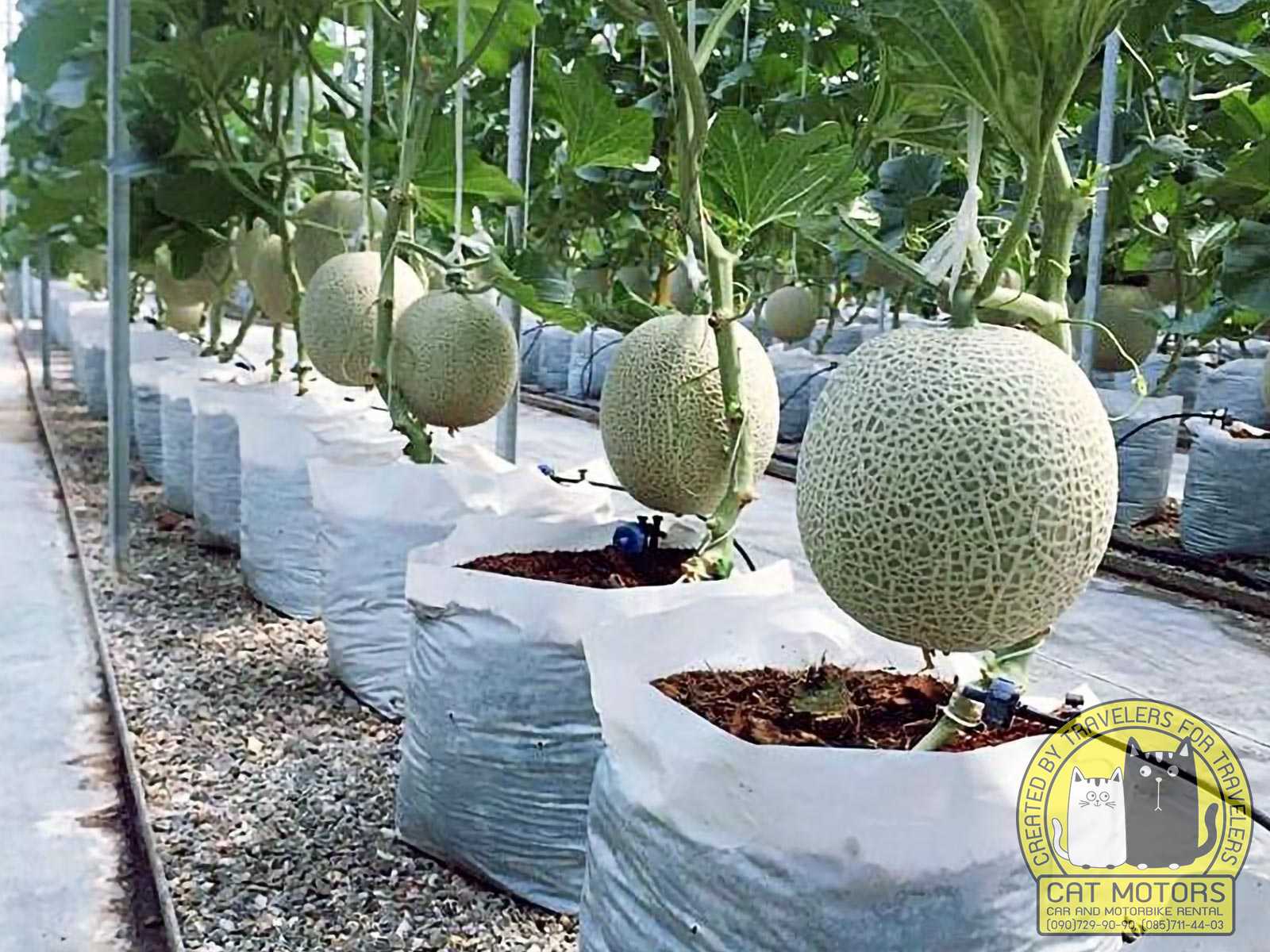
However, at certain times of the year, there may be additional stops at Melon School (seasonal only), Red Xinjiang dates field (seasonal only, opening from November – February), and strawberry fields (seasonal only, opening in February). Rock climbing, cycling and e-scooter riding, rope park – you’ll find that here, as well.
Map & Directions
Singha Park is located on the same route as Wat Rong Khun. As you travel along the route from Chiang Mai, you’ll arrive at Wat Rong Khun first. Go past the temple further for about 7 kilometers and you’ll arrive at Singha Park. If you’re coming from Chiang Rai, you can drive along the Route 1211 for 13 kilometers.
Nearby Attractions
Although there are enough activities to keep visitors occupied for a full day or more, they could also combine them with trips to nearby attractions.
Wat Rong Khun, the White Temple, is only 2.7 km (1.7 miles) from the park. The sparkling white temple built by national artist Chalermchai Kositpipat features a bridge representing “the cycle of rebirth,” the Gate to Heaven, and a golden restroom.
When heading back to Chiang Rai, make sure to drive past another Chalermchai Kositpipat creation: the Golden Clock Tower in the city center. The clock is gold from top to bottom, gleaming in the daylight, and the city puts on a sound and light show every evening on the hour between 7 pm and 9 pm.
Our Summary
Singha Park in Chiang Rai is a captivating destination that blends natural beauty with exciting activities. This sprawling park offers a serene escape from the chaos of the city and traditional tourist sites. It promises an enchanting experience combining nature, culture, sporting activities, and excellent dining, making it a must-see destination for an unforgettable Thai adventure.
Weather Forecast
The most accurate weather forecast in these parts. Please refer to this data if you are traveling.
FAQ
Typically, Singha Park is open from 9:00 AM to 5:00 PM. However, hours may vary depending on the season or special events.
There is usually no entrance fee to enter the park. However, certain activities or attractions within the park may have separate charges.
Singha Park offers a wide range of activities including biking, tea plantation tours, zipline adventures, and a chance to see various farm animals.
Singha Park is known for its vast tea plantation, beautiful flower fields, and the iconic giant Singha (Lion) statue.
Guided tours are often available at Singha Park. These tours typically provide insights into the tea-making process and the history of the park.
The park is home to a wide variety of plant life, especially tea plants and colorful flowers. There is also a farm area where visitors can see animals like zebras and giraffes.
Yes, the park has several cafes and restaurants that serve a variety of food and beverages. Picnic areas are also typically available.
Singha Park hosts several events and festivals throughout the year, including the International Balloon Fiesta, which features colorful hot air balloons from around the world.
Generally, photography for personal use is permitted throughout the park. However, for professional or commercial photography, you might need to seek permission from the park authorities.
There are usually local buses and taxis that can take you to Singha Park. Alternatively, you can rent a bike or a car to reach the park.
Most areas in Singha Park are wheelchair accessible. However, some trails or activities might not be suitable for wheelchairs due to the natural terrain.
Yes, there are a variety of accommodation options around Singha Park, ranging from budget-friendly hotels to more luxurious resorts. The availability and prices of these accommodations may vary depending on the season.
Discover Northern Thailand’s beauty and culture through our expertly crafted travel guides, featuring the best scenic routes and attractions. Start your adventure by checking out our scooter hire in Chiang Mai homepage. Don’t forget to review our terms and conditions for a smooth rental experience. These resources will help you navigate Northern Thailand’s picturesque landscapes and vibrant communities with ease.
Our website also provides valuable tips on safe riding, engaging with locals, and discovering the best food spots. This practical advice will enhance your travel experience, making it both enjoyable and enriching.
- Author: Natcha Lindberg
- Updated: January 4, 2026
- No Comments




